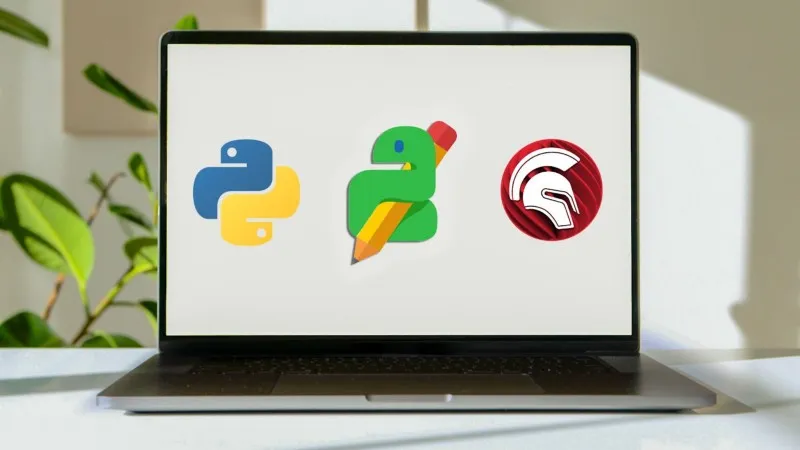In the world of web development, one common task is to build CRUD (Create, Read, Update, Delete) applications. Let’s walk through the process of creating a simple Task CRUD app using FastAPI, PostgreSQL, SQLAlchemy, and Docker. This tutorial assumes you have a basic understanding of Docker and Python.

Step 1: Set Up Your Development Environment
Before diving in, make sure you have Docker and Docker Compose installed on your system. Create a new directory for your project:
mkdir fastapi-task-app cd fastapi-task-app
Set up a virtual environment:
python -m venv venv source venv/bin/activate
Install the required Python packages:
pip install fastapi uvicorn SQLAlchemy alembic databases[postgresql]
Step 2: Initialize a Git Repository
Initialize a Git repository in your project directory:
git init
Step 3: Set Up FastAPI App and Database
Create the following directory structure for your project:
fastapi-task-app/
app/
__init__.py
models.py
main.py
alembic/
config.py
Inside config.py, configure your FastAPI application and database:
# config.py
DATABASE_URL = "postgresql://postgres:password@db:5432/tasks"
Step 4: Create Database Models
Define your database models inside models.py. For this example, let's create a Task model:
# app/models.py
from sqlalchemy import Column, Integer, String
from app.config import metadata
tasks = Table(
"tasks",
metadata,
Column("id", Integer, primary_key=True),
Column("title", String(100), nullable=False),
Column("description", String(255)),
)
Step 5: Create FastAPI Endpoints
Create endpoints for your FastAPI application inside main.py. Implement CRUD operations for tasks:
# app/main.py
from fastapi import FastAPI, HTTPException, Depends, Query
from databases import Database
from sqlalchemy import select
from app.models import tasks
app = FastAPI()
@app.post("/tasks/")
async def create_task(title: str, description: str = ""):
query = tasks.insert().values(title=title, description=description)
await database.execute(query)
return {"message": "Task created successfully"}
@app.put("/tasks/{task_id}/")
async def update_task( task_id: int,
title: str,
description: str = ""):
query = tasks.update().where(tasks.c.id == task_id).values(title=title, description=description)
await database.execute(query)
return {"message": "Task updated successfully"}
@app.get("/tasks/{task_id}/")
async def get_task(task_id: int):
query = select([tasks]).where(tasks.c.id == task_id)
result = await database.fetch_one(query)
if result is None:
raise HTTPException(status_code=404, detail="Task not found")
return result
@app.get("/tasks/")
async def get_tasks():
query = select([tasks])
results = await database.fetch_all(query)
return results
@app.delete("/tasks/{task_id}/")
async def delete_task(task_id: int):
query = tasks.delete().where(tasks.c.id == task_id)
await database.execute(query)
return {"message": "Task deleted successfully"}
Step 6: Initialize Database Migrations
Initialize Alembic for database migrations:
alembic init alembic
Edit the generated alembic/env.py file to load your FastAPI application and database configuration:
from your_app import create_app
from app.config import DATABASE_URL
app = create_app()
database = Database(DATABASE_URL)
def run_migrations_offline():
context.configure(
url=DATABASE_URL,
target_metadata=target_metadata,
literal_binds=True,
dialect_opts={"paramstyle": "named"},
include_schemas=True,
)
# Implement other Alembic configurations...
Step 7: Create Database Migrations
Generate an initial migration:
alembic revision --autogenerate -m "Initial migration"
Apply the migration to create the database tables:
alembic upgrade head
Step 8: Create a Docker Compose File
Create a docker-compose.yml file to define your application and database services:
# docker-compose.yml
version: '3'
services:
web:
build: .
command: uvicorn app.main:app --host 0.0.0.0 --port 5000 --reload
volumes:
- ./app:/app
ports:
- "5000:5000"
depends_on:
- db
environment:
DATABASE_URL: postgresql://postgres:password@db:5432/tasks
db:
image: postgres:latest
environment:
POSTGRES_USER: postgres
POSTGRES_PASSWORD: password
POSTGRES_DB: tasks
volumes:
- postgres_data:/var/lib/postgresql/data
volumes:
postgres_data:
Step 9: Create a Dockerfile
Create a Dockerfile to build your FastAPI application container:
# Dockerfile
FROM python:3.8-slim
WORKDIR /app
COPY requirements.txt requirements.txt
RUN pip install -r requirements.txt
COPY . .
CMD ["uvicorn", "app.main:app", "--host", "0.0.0.0", "--port", "5000", "--reload"]
Step 10: Create a Requirements File
Create a requirements.txt file to list your project's dependencies:
fastapi==0.68.1
uvicorn==0.15.0
SQLAlchemy==1.4.31
alembic==1.7.3
databases[postgresql]==0.6.4
Step 11: Build and Run the Docker Containers
Build and run the Docker containers for your application:
docker-compose up --build
Your FastAPI Task CRUD app is now running in a Docker container, and you can access it at http://localhost:5000. Use tools like Postman or cURL to interact with the CRUD API.
This is a basic setup, and you can extend it further by adding authentication, more features, and error handling based on your project requirements.
